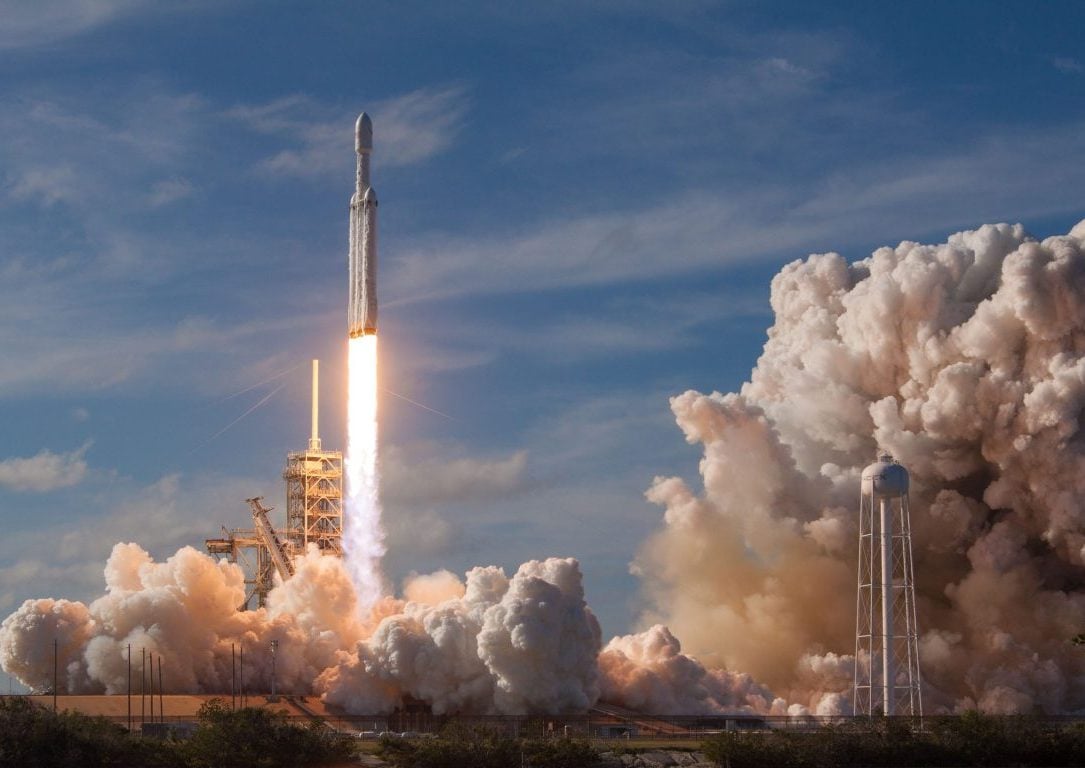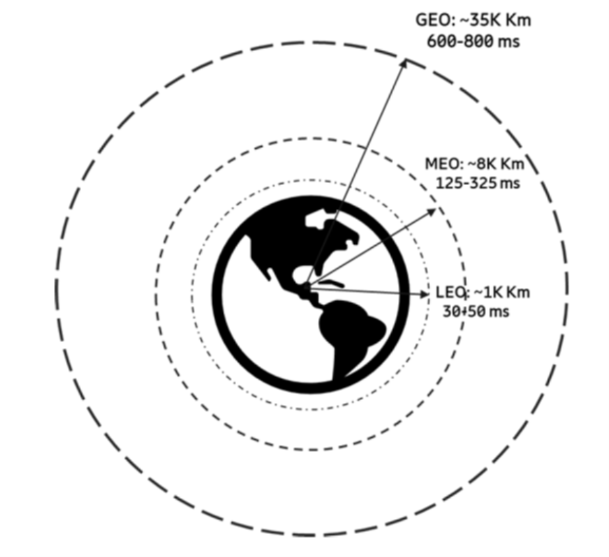Shiv Putcha, Principal Analyst at emerging tech specialists Mandala Insights, takes a look at the growth of satellite based communications service providers, and particularly the growing role of Low Earth Orbit architectures – what are they and why have they now become popular amongst providers?
The last few months have seen a steady drumroll of announcements about the new wave of satellite-based communication service providers (CSPs). Much of this attention has zeroed in on the SpaceX-backed Starlink service with Elon Musk at the helm. The other large, emerging provider, OneWeb, has emerged from its near-death experience in 2020 with a new ownership consortium led by BT, Bharti Airtel and others and has begun rolling out services.

Not to be outdone, there is a rival play by Jeff Bezos’ Amazon, branded Amazon Kuiper, with plans to deploy a rival service around the world. The common thread amongst all these players is that these new satellite networks will be based on Low Earth Orbit (LEO) architectures. Satellite services using geosynchronous orbit (GEO) and middle earth orbit (MEO) satellite systems have been around for decades, it is worth asking why LEO and why now? But first, it is worth digging a little bit into what LEO-based satellites are and how they differentiate with other systems.
LEO – the what, the why and the why now?
There are several fundamental differences between LEO satellites and their predecessors.
- The very first distinction about LEO is, as the name implies, that they are in low-earth orbit. Typically, LEO satellites would orbit at altitudes of up to 1000 kilometres, but most likely in a range of between 500kms-800kms. By contrast, the older GEO satellites are up to altitudes of 35 kilometres above the earth’s surface.
 The second major point of difference between LEO and GEO systems is that while 2GEO satellites are, as the name implies, orbiting in a stationary and fixed relative to the earth’s surface, LEO satellites are moving in orbit across geographies. So, for a LEO system to offer uninterrupted service, the implication is that no one LEO satellite will do, you need a constellation of LEO satellites in orbit.
The second major point of difference between LEO and GEO systems is that while 2GEO satellites are, as the name implies, orbiting in a stationary and fixed relative to the earth’s surface, LEO satellites are moving in orbit across geographies. So, for a LEO system to offer uninterrupted service, the implication is that no one LEO satellite will do, you need a constellation of LEO satellites in orbit.- The third point of difference is that with the LEO satellites so much closer to the earth’s surface, the latency is much lower relative to that offered by GEO based systems, quite possibly dropping to lower than 50 milliseconds (ms) relative to the 600-800ms range for GEO systems.
- Fourth, LEO satellites are much smaller in size and cost relative to GEO satellites. Moreover, because of this and the much lower altitudes, the costs of launching LEO satellites are relatively favourable relative to GEO. However, the smaller size also means a smaller footprint in terms of the coverage area on the earth’s surface.
The superior economics of LEO-based satellite constellations is the fundamental driver behind recent momentum relative to MEO and GEO. But beyond the favourable economics, the LEO satellite momentum has also benefitted from the increased participation of private entities like SpaceX and others who are investing heavily in R&D and partnering with space agencies to launch these satellites into orbit. For example, while Starlink satellites are launched by SpaceX rockets, OneWeb satellites were launched by Arianespace from the Vostochny Cosmodrome in Kazakhstan.
Much of the attention on LEO-based satellites have focused on the US and European markets so far. However, there is already significant activity in the Asia-Pacific region. One of the biggest forces driving demand in Asia is the presence of many sovereign nations, highly diverse, with great diversity in terrain and population patterns.“
Shiv Putcha, Principal Analyst

The biggest challenge that needs to be addressed relates to coverage gaps in terrestrial networks. Cellular and fixed networks have struggled to overcome challenges with difficult terrain like mountainous areas or deserts.
Coverage gaps also occur with restricted areas, including defense, national parks, and research installations, which can run up into thousands of square kilometres. Several communities and installations are in extremely remote areas and suffer from a lack of connectivity. Besides terrain and remoteness, a major factor is the prohibitive economics of extending network coverage to these areas. Business as usual with planning for a fiber pass simply won’t pass the financial affordability test. As a result, telcos have traditionally cherry picked the coverage areas based on high population density or traffic patterns.
With the rise of Industry 4.0 and IoT, several applications needing mission-critical connectivity have increasingly come into focus. These cut across manufacturing, oil and gas, aviation, maritime and several industry verticals. Many of these are in remote areas and need reliable connectivity. While many of these have been serviced adequately through GEO-based satellite connectivity in the past, connectivity has been expensive, and capacity has also been a problem.
Today, with the increasing availability of mobile private networks (MPN), deploying a local-area network for these use cases is not the problem. The issue lies with backhaul connectivity that offers both reliability, lower latency, and higher capacity, so that these applications can connect back to the core network and the cloud. LEO-based constellations can now offer a real alternative.
The view from Asia
Much of the attention on LEO-based satellites have focused on the US and European markets so far. However, there is already significant activity in the Asia-Pacific region. One of the biggest forces driving demand in Asia is the presence of many sovereign nations, highly diverse, with great diversity in terrain and population patterns.
At the one end, you have emerging markets like India with massive population density but negligible fixed broadband connectivity versus sparsely populated markets like Australia with the opposite dynamic. You also have countries with even distributions of population like India and Japan and others like China and Australia with significant disparity.
China, for example, has nearly ninety percent of its population residing in roughly a third of the geographic area of the country.
LEO-based service providers like OneWeb and Starlink have already started doing the groundwork for operations in the region and have begun signing partnership agreements with local telcos. In the Philippines, Starlink has reportedly been in talks with two local ISPs, Transpacific Broadband Group International Inc. (TBGI) and fiber-optic broadband operator Converge ICT Solutions Inc. to offer services in their local markets. Starlink also set up a local subsidiary in India, Starlink Satellite Communications Private Limited, with a stated goal of deploying up to two hundred thousand terminals by end-2022.
Australia has seen several agreements, with Vocus working with both Starlink and OneWeb to offer services that are likely to compete with the NBN Co services. OneWeb has also signed deals in India and looking to deploy to other markets in region. Of course, Starlink and OneWeb are not the only two LEO constellations that are coming online. Telesat has services available in China, Japan and Korea, AST SpaceMobile has services in Japan and preparing to extend into other markets. Amazon’s Project Kuiper is preparing to offer services in Australia and New Zealand, which will both benefit from coverage offered by the first wave of satellites to be launched.
This post originally appeared on the author’s website Mandala Insights and is reused here with kind permission




